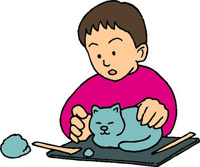
Worksheets and No Prep Teaching Resources
Reading Comprehension Worksheets
 Worksheets and No Prep Teaching Resources Reading Comprehension Worksheets |
|
| edHelper's suggested reading level: | grades 2 to 4 | |
| Flesch-Kincaid grade level: | 3.23 |
|
Soap and Popsicle Stick Art
By Colleen Messina |

|

 |
Create Weekly Reading Books
Prepare for an entire week at once! |
| Leave your feedback on Soap and Popsicle Stick Art (use this link if you found an error in the story) |
 |
Second Grade Reading Comprehensions and 2nd Grade Reading Lessons
|
 |
Art Theme Unit: Reading Comprehensions
|